
Vesterbro is one of the 15 administrative, statistical, and city tax districts (bydele) comprising the municipality of Copenhagen, Denmark. It covers an area of 3.76 km2 (1.45 sq mi), and has a population of 51,466 and a population density of 13,688 per km2.

Kongens Enghave, commonly known as Sydhavnen or the postal district of 2450 Copenhagen SV (southwest) is a district in southern Copenhagen. While its core is a largely pre-WWII former working class district, it also contains an upscale residential area along the harbour having been developed after 2000, scattered industrial areas, large parks such as Valbyparken and Sydhavnstippen, allotment gardens and parts of Vestre Kirkegård, the city's largest cemetery.

Valby ( ) is one of the 10 official districts of Copenhagen Municipality, Denmark. It is in the southwestern corner of Copenhagen Municipality, and has a mixture of different types of housing. This includes apartment blocks, terraced housing, areas with single-family houses and allotments, plus the remaining part of the old Valby village, around which the district has formed, intermingled with past and present industrial sites.
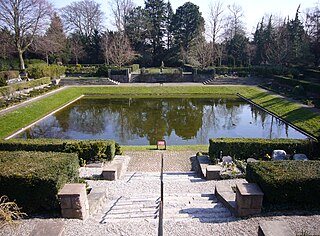
Vestre Cemetery is located in a large park setting in the Kongens Enghave district of Copenhagen, Denmark. With its 54 hectares it is the largest cemetery in Denmark.

Bernstorff Palace in Gentofte, Copenhagen, Denmark, was built in the middle of the 18th century for Foreign Minister Count Johann Hartwig Ernst von Bernstorff. It remained in the possession of the Bernstorff family until 1812. In 1842, it was bought by Christian VIII. For many years, it was used as a summer residence by Christian IX until his death in 1906.

Søndermarken is a park in Frederiksberg on the border to Valby and the Carlsberg area in Copenhagen, Denmark. It shares much of its history with Frederiksberg Gardens from which it is separated only by Roskildevej. Cisternerne—an underground venue for art exhibitions in the former cisterns—are located inside the park.

Ørstedsparken is a public park in central Copenhagen, Denmark. One in a series of parks which were laid out on the grounds of the old fortification ring after it was decommissioned in the 1870s, the park still retains elements from the old fortifications in its topography—a section of the moat now serve as an elongated lake and former bastions appear in the landscape as small hills. The park is named for the brothers Ørsted, the politician and jurist Anders Sandøe Ørsted, and the physicist Hans Christian Ørsted, who both are commemorated with monuments in the park.
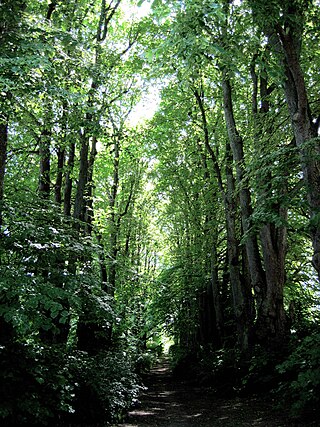
Mariebjerg Cemetery is located in Gentofte north of Copenhagen, Denmark. It was laid out between 1926 and 1933 to the design of the landscape architect Gudmund Nyeland Brandt and is considered an important example of European Modernist landscape architecture. Its design has inspired many other cemeteries both in Denmark and abroad.
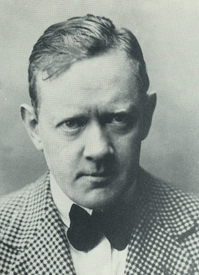
Kai Nielsen was a Danish sculptor.

Halmtorvet is a public square in the Vesterbro district of Copenhagen, Denmark. It is located next to Copenhagen Central Station in front of the Meat District. The oblong square eventually turns into Sønder Boulevard, a broad street with a park strip in its central reserve, which continues to Enghavevej at Enghave station.
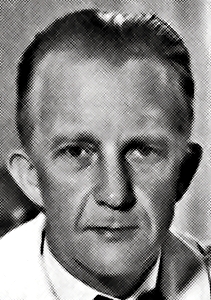
Niels August Theodor Kaj Gottlob, usually known as Kaj Gottlob, was a Danish architect who contributed much to Neoclassicism and Functionalism both as professor of the School of Architects at the Royal Danish Academy of Fine Arts and as a royal building inspector.
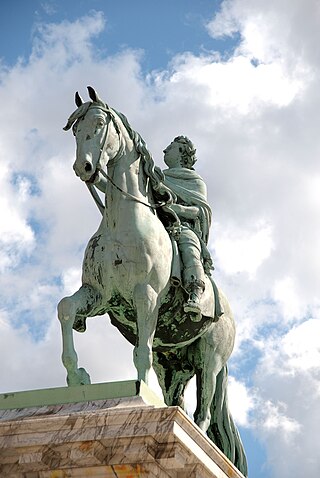
Danish sculpture as a nationally recognized art form can be traced back to 1752 when Jacques Saly was commissioned to execute a statue of King Frederick V of Denmark on horseback. While Bertel Thorvaldsen was undoubtedly the country's most prominent contributor, many other players have produced fine work, especially in the areas of Neoclassicism, Realism, and in Historicism, the latter resulting from growing consciousness of a national identity. More recently, Danish sculpture has been inspired by European trends, especially those from Paris, including Surrealism and Modernism.

Søren Carl Theodor Marius Sørensen was a Danish landscape architect who is considered to be one of the greatest landscape architects of the 20th century. A contemporary of Thomas Church, Geoffrey Jellicoe and Luis Barragán he was a leading figure in the first generation of Modernists in landscape design. He is best known for designing the first Adventure playground in Emdrup, Copenhagen.
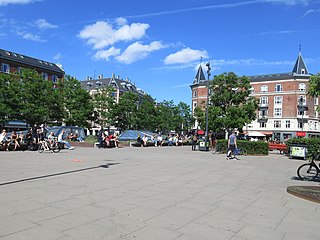
Enghave Plads is a central public square of the Vesterbro district in Copenhagen, Denmark. It is located where Istedgade reaches Enghavevej, which separates the square from Enghave Park.

Hotel Marienlyst is a seaside hotel located just north of Kronborg Castle in Helsingør, Denmark. It takes its name after Marienlyst House, a neighboring former royal summer retreat, which was part of it from its foundation in 1859 until 1896. Facilities include a restaurant, bar, wellness area and a casino. The Denmark national team stays at the hotel in connection with home matches and training sessions.

Lersøparken is a public park located on the east side of Tagensvej and just south of Bispebjerg Hospital in the Bispebjerg district of Copenhagen, Denmark. The greenway Lersøstien runs through the park and an adjacent area with allotments.
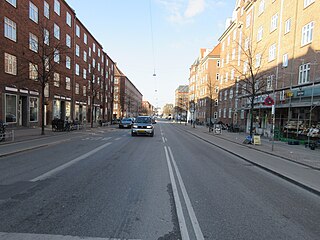
Enghavevej is a major street in the Vesterbro and Kongens Enghave districts of Copenhagen, Denmark. It runs from Vesterbrogade in the north to Sydhavns Plads in the south, linking Kingosgade with Sydhavnsgade and Borgbjergsvej.

Kingosgade is a street straddling the border between Vesterbro and Frederiksberg in Copenhagen, Denmark. It runs from Vesterbrogade in the south to Frederiksberg Allé in the north, linking Enghavevej with Alhambravej.

Ny Carlsberg Vej is a street in the Vesterbro district of Copenhagen, Denmark. It runs from Sønder Boulevard in the east to the point where Pile Allé turns into Valby Langgade at the southeastern corner of the park Søndermarken in the west. The last cobbled part of the street passes through the Carlsberg neighbourhood. This section of the street is spanned by the Dipylon Building and the Elephant Tower, both of which were designed by Vilhelm Dahlerup in the ornate Historicist style and are among the most iconic buildings of the former Carlsberg brewery site.
Vesterfælledvej is a street in the Vesterbro district of Copenhagen, Denmark. The street runs from Vesterbrogade at Sorte Hest in the north to Vigerslev Allé in the south. The Carlsberg and Humleby neighbourhoods are located on the west side of the street.























